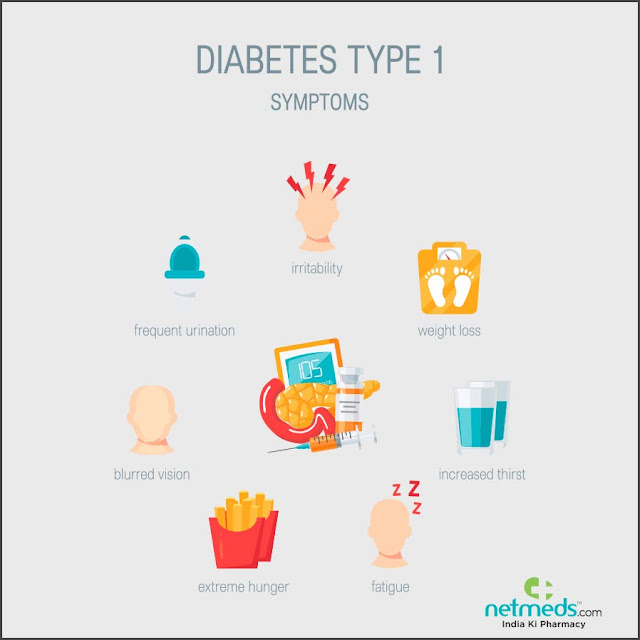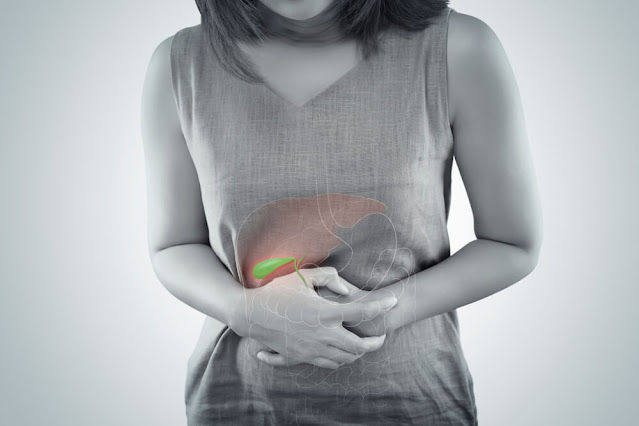What Are the Symptoms of Type 1 Diabetes?
Type 1 diabetes, referred to as insulin-dependent diabetes or juvenile diabetes, is a chronic health issue. Anyone suffering from this condition will have a pancreas either not producing insulin or making it in minute quantities.
Insulin is a peptide hormone that helps glucose (blood sugar) enter the body cells to be used as an energy source. If there is no insulin, the body cells would not be able to take up glucose and therefore the sugars would begin to accumulate in the bloodstream. This results in high blood sugar which harms the body and leads to many of the symptoms and complications of diabetes.
Type 1 diabetes can happen to anyone irrespective of their age, but usually, it develops in children, adolescents, and young adults. It is less commonly found than Type 2 diabetes-i.e. about 5-10% of diabetic individuals are diagnosed to be suffering from Type 1 diabetes.
There is no definite cause of Type 1 diabetes. Medical researchers think it to be caused by an autoimmune reaction- a condition wherein the body’s self-immune cells, which normally act against harmful microbes, destroy the beta-cells (islets) of the pancreas which makes insulin. Another possible cause could be genetic predisposition-passing of traits of type 1 diabetes from parents to offspring. Sometimes, environmental triggers such as the body’s exposure to viruses can also lead to Type 1 diabetes. Its risk factors include family history, race (more risk of type 1 diabetes in white-skinned people), geography (more type 1 diabetes cases are found in an area away from the equator), and age (risk of diabetes is at its peak in children between 4 to 7 and 10 to 14 years old). Currently, Type 1 diabetes cannot be prevented and has no cure, but it can be treated. The potential treatments for diabetes that still are under research include pancreas transplantation or islet cell transplantation.
The Most Common Signs and Symptoms of The Onset of Type 1 diabetes:
Some people have mild symptoms of diabetes that can go unnoticed while others experience visible symptoms. These symptoms are usually serious and occur very suddenly, over a period of few days to weeks. The typical type 1 diabetes signs and symptoms include:
- Excessive thirst
- Excessive hunger-even after eating sufficient food
- Frequent urination
- Blurry vision
- Fatigue or Extreme tiredness
- Unexplained significant weight loss in less time even after eating more
- Slow healing of cuts/ bruises
- Bedwetting in diabetic children who have never done it at night any time before.
The first symptoms of Type 1 diabetes can even be signs of a life-threatening condition known as diabetic ketoacidosis (DKA). It occurs when the blood glucose level is dangerously high and the nutrient uptake by the cells is hampered. As a result, the body breaks down the fat and muscles for energy. This causes the build-up of ketones in the blood and urine. The symptoms include:
- Dry or flushed skin
- Difficulty in breathing
- Fruity smelling breath
- Nausea or Vomiting
- Stomach ache
- Confusion or trouble with concentration.
If one or more of the above-mentioned typical symptoms are experienced by anyone, then they must consult a healthcare professional. However, if there are any ketoacidosis symptoms, they must get medical help immediately as it is an emergency medical issue.
In some cases, people might experience a brief remission of Type 1 diabetes symptoms while the pancreas is still producing insulin. This phase is called as honeymoon period and it occurs after someone has taken insulin. It can last for a week or even up to one year.
How is Type 1 Diabetes Different from Type 2?
Type 1 and Type 2 diabetes have similar symptoms and even can result in the same kind of complications, over time. This is why some people are misdiagnosed. However, both of these diseases are very different.
Type 1 diabetes is caused by the inability of the body to produce sufficient insulin on its own whereas Type 2 diabetes is the result of body cells not responding properly to insulin.
Type 1 diabetes symptoms appear very quickly and are obvious while Type 2 diabetes symptoms develop gradually over many years and sometimes there are no signs at all until the patient has a complication.
Type 1 Diabetes Treatment:
Once diagnosed that the body is not able to produce its insulin, insulin shots must be taken to keep blood sugar levels in the normal range. Generally, the daytime blood sugar levels before meals must normally be between 80-130 mg/dL and after meals, they must not be higher than 180 mg/dL. The insulin therapy throughput lifetime is a must for anyone suffering from Type 1 diabetes. There are many types of insulin available including short-acting insulin, rapid-acting insulin, intermediate-acting insulin, and long or ultra-long-acting insulin. These can be taken through a pump, insulin pen, or via injections. Type 1 diabetes patients may even be prescribed other medications like aspirin, hypertension drugs, and cholesterol-lowering drugs. For insulin therapy, regular blood sugar level monitoring is needed. [
Type 1 Diabetes Treatment Guidelines:
Along with the use of insulin and other medications, diabetic patients must manage diabetes through daily self-care. They must maintain consistent lifestyle strategies which include:
- Proper Diet: It’s important to follow a diabetes meal plan which consists of more nutritious, high-fiber, and low-fat foods like fruits, vegetables, and whole grains. It’s better to have short meals to keep blood sugar levels from spiking and sipping meals is not advised.
- Safe Exercises: Physical activity helps lower blood sugar levels, thus it’s important to do daily exercise for anyone having Type 1 diabetes. It’s best to go for moderate aerobic exercises for at least 150 minutes per week.
The management of type 1 diabetes by medications or lifestyle changes does require monitoring of blood sugar levels very often.
Source:-What Are the Symptoms of Type 1 Diabetes?




Comments
Post a Comment